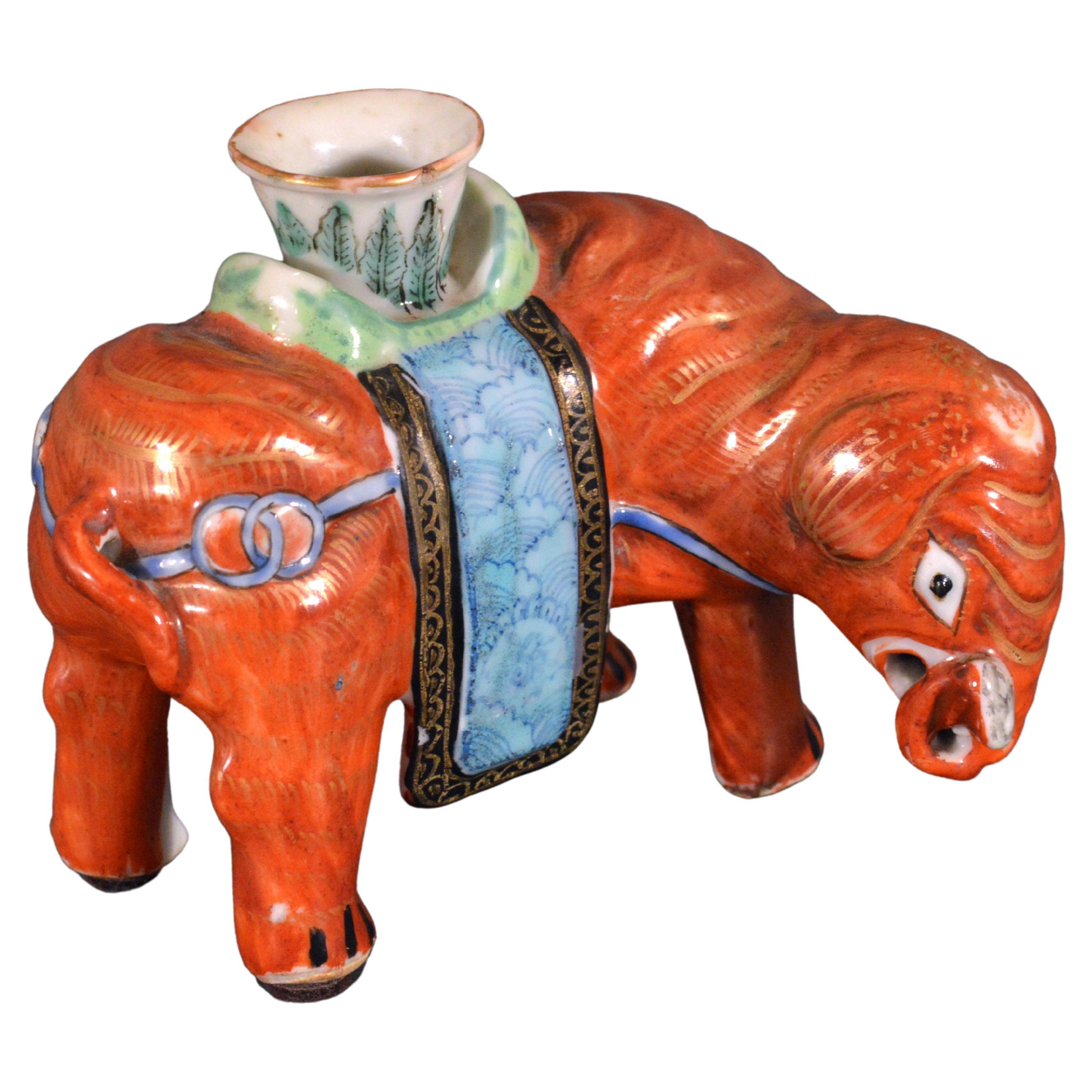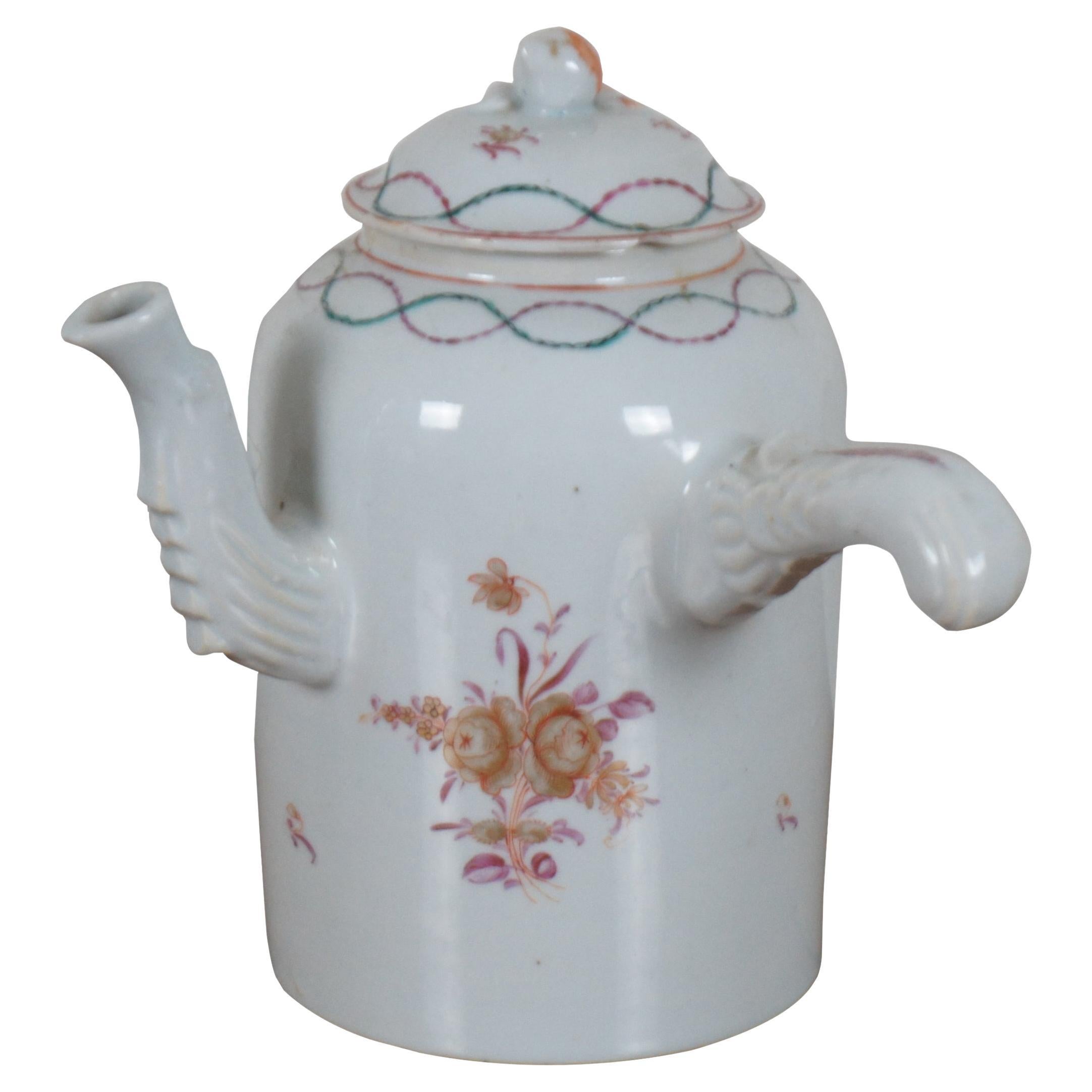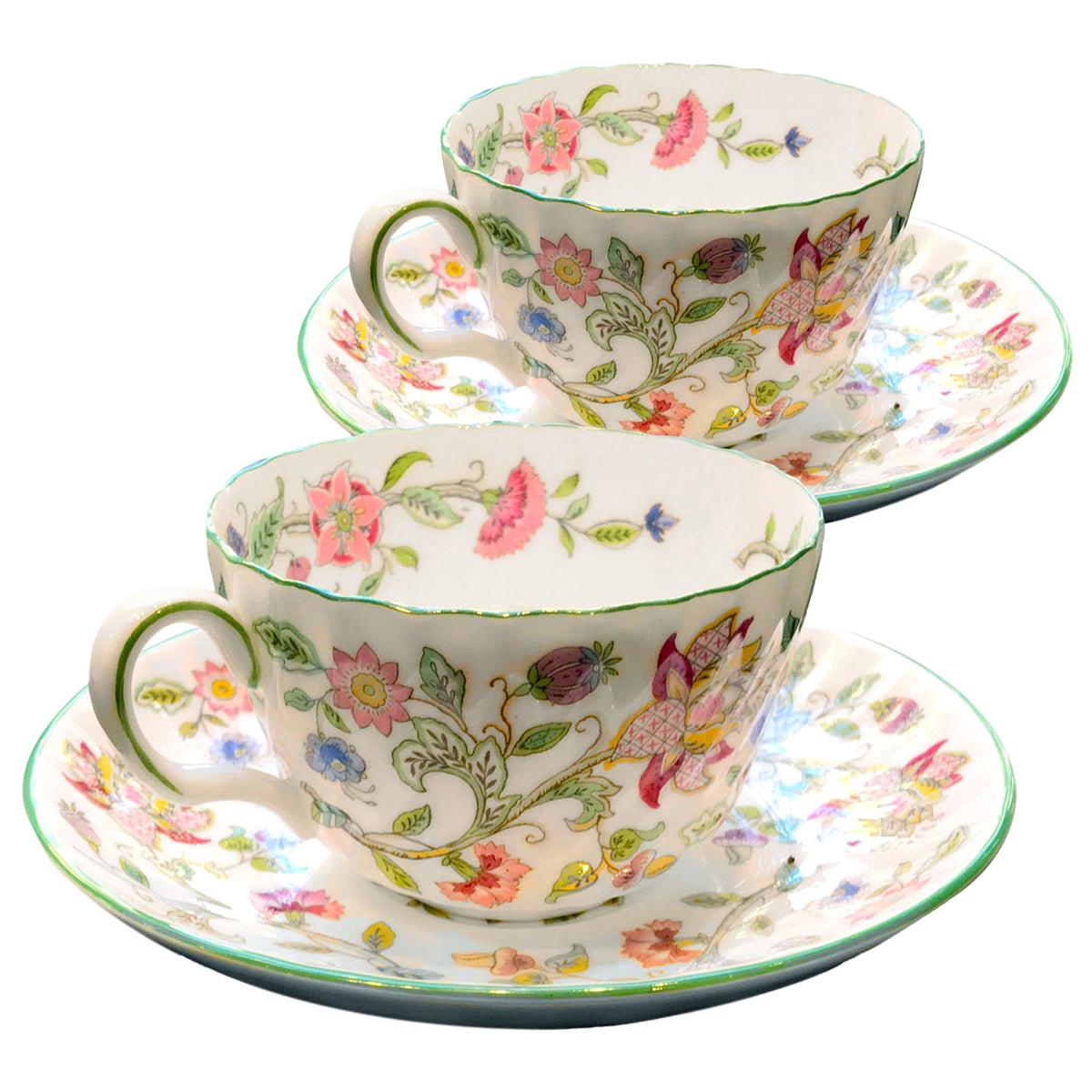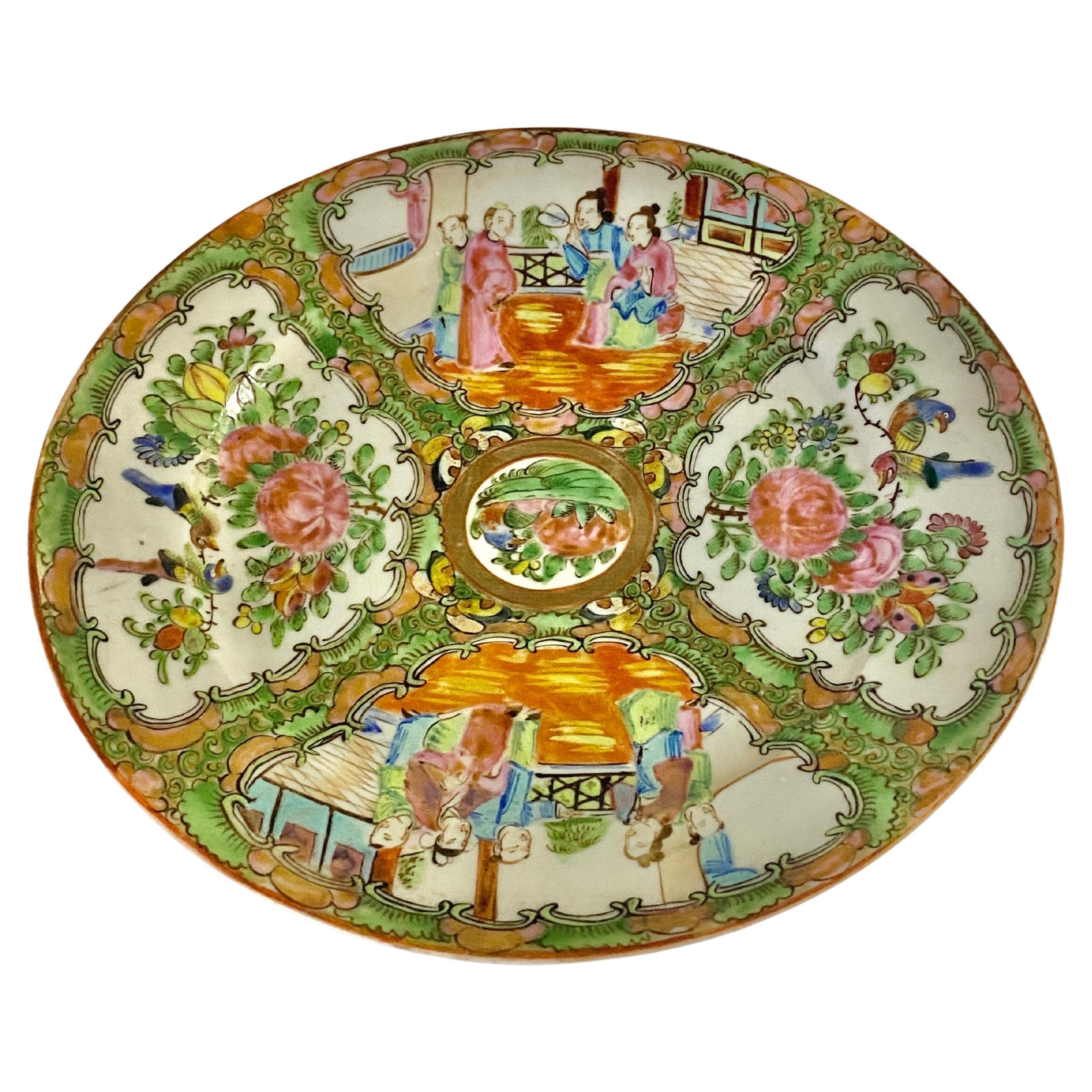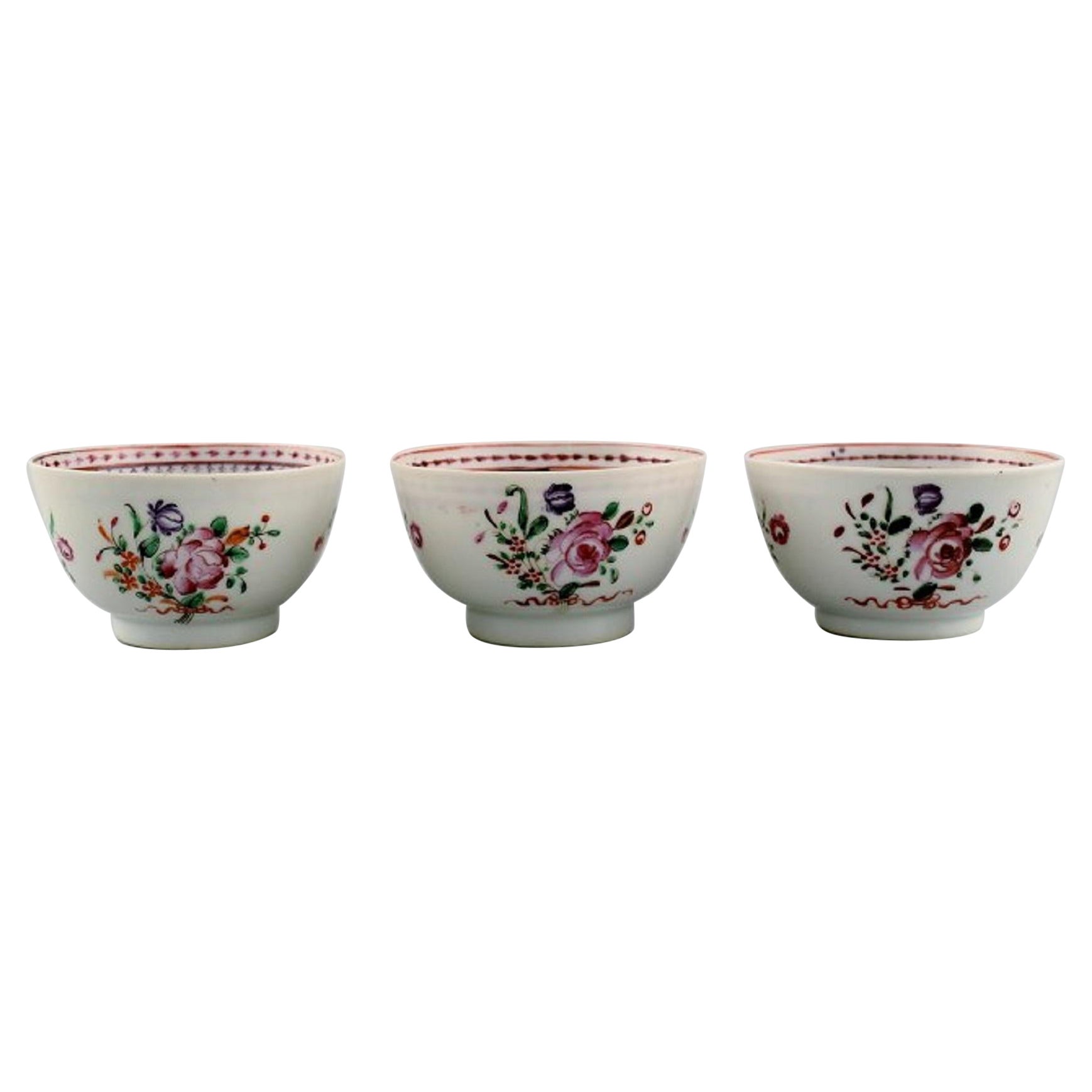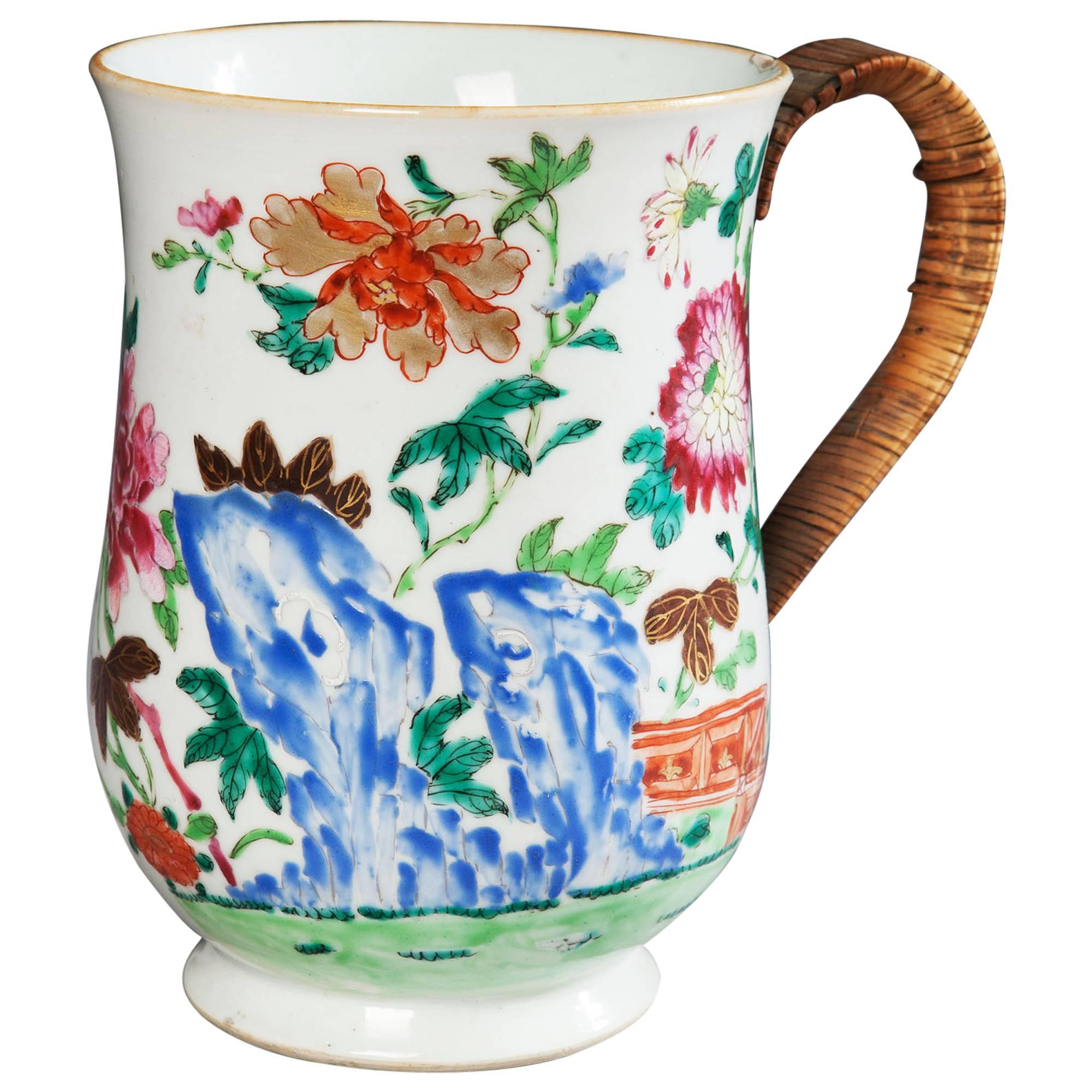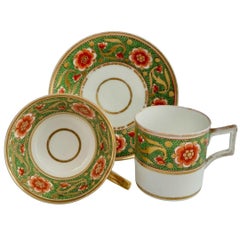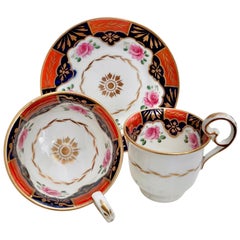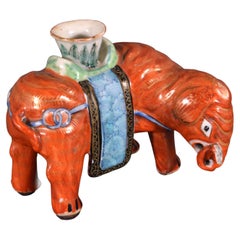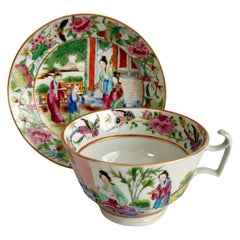
Chinese Export Porcelain Breakfast Teacup, Canton Famille Verte Figures, '1'
View Similar Items
Want more images or videos?
Request additional images or videos from the seller
1 of 16
Chinese Export Porcelain Breakfast Teacup, Canton Famille Verte Figures, '1'
About the Item
- Dimensions:Height: 1 in (2.54 cm)Diameter: 1 in (2.54 cm)
- Sold As:Set of 2
- Style:Chinese Export (Of the Period)
- Materials and Techniques:
- Place of Origin:
- Period:
- Date of Manufacture:circa 1880
- Condition:Wear consistent with age and use. Excellent condition without damage, repairs, crazing or wear other than some very light rubbing.
- Seller Location:London, GB
- Reference Number:Seller: LT-CP01b1stDibs: LU4805119686192
About the Seller
5.0
Platinum Seller
These expertly vetted sellers are 1stDibs' most experienced sellers and are rated highest by our customers.
Established in 2016
1stDibs seller since 2019
208 sales on 1stDibs
More From This SellerView All
- Rockingham Porcelain Teacup, Gilt Seaweed, Flowers, Rococo Revival, 1832By RockinghamLocated in London, GBOn offer is a teacup and saucer made by Rockingham in about 1832. The set is decorated with a gilt seaweed pattern and beautiful little flower posies. We have an entire tea servic...Category
Antique 1830s English Rococo Revival Tea Sets
MaterialsPorcelain
- Derby Porcelain Teacup Trio, Green with Red Flowers, 1800-1810By DerbyLocated in London, GBThis is a wonderful "true trio" made by the Derby Porcelain factory between 1800 and 1810. The trio is decorated in an overglaze green ground with cheerful red flowers. In the late 18th and early 19th Century cups and saucers...Category
Antique Early 1800s English Regency Tea Sets
MaterialsPorcelain
- Coalport Porcelain Teacup Trio, Orange with Roses, Regency, circa 1820By Nantgarw China WorksLocated in London, GBOn offer is a beautiful and rare "true trio" made by Coalport in about 1820. The trio has a beautiful Regency shape with heart shaped handles. This pattern is unusual and very rare....Category
Antique 1820s Welsh Regency Tea Sets
MaterialsPorcelain
- Coalport Porcelain Teacup, Beige with Landscapes, Rococo Revival, ca 1840By Coalport PorcelainLocated in London, GBThis is a beautiful teacup and saucer made by Coalport in 1840, which was the Rococo Revival period. The set is decorated with a warm beige ground with gilt floral patterns and beaut...Category
Antique 1840s English Rococo Revival Tea Sets
MaterialsPorcelain
- Samuel Alcock Porcelain Teacup, White with Flower Sprays, ca 1823By Samuel Alcock & Co.Located in London, GBA teacup and saucer in the “half orange” shape, white with simple gilt rim and beautiful hand painted flower sprays Pattern unknown but similar to 1082 Year: ca 1823 Size: cup diameter 10cm (4”), saucer diameter 14.2cm (5.5”) Condition: excellent, some rubbing to gilt There are several items available in this design, please see group image and ask for more info if interested. The Samuel Alcock factory was operative in Staffordshire between 1822 and 1856, after which it was bought by Sir James Duke and Nephews. The factory started as a partnership between the young Samuel Alcock and the older Ralph Stevenson, who provided the factory and capital. Alcock quickly took the factory to great heights, building one of the biggest factories of its time. Alcock jumped on the new Rococo Revival fashion and served a huge new middle class market. The reason we now don't hear much about Samuel Alcock porcelain...Category
Antique 1820s English Regency Tea Sets
MaterialsPorcelain
- Spode Porcelain Teacup Trio, Red Imari Dollar Pattern, Regency, ca 1810By SpodeLocated in London, GBThis is a beautiful orphaned teacup made by Spode in about 1810. It bears a beautiful Japanese-inspired Imari pattern. Spode was the great pioneer among the Georgian potters in England. Around the year 1800 he perfected the bone china recipe that has been used by British potters ever since, and he was also the leading potter behind the technique of transferware, making it possible for English potters to replace the Chinese export china, which had come to an end around that time, with their own designs. This was fundamental to a thriving industry that would last for about 150 years and provide half the world with their tableware. Spode porcelain is regarded as one of the highest quality porcelains around; for a soft-paste porcelain it is surprisingly hard and fine, and has a wonderful bright white colour. The pattern on this can is called "Dollar" pattern, a very famous pattern that was used by English potters in the 18th and early 19th Century. It is obvious why it is called “dollar” - but its origin is less obvious! It is thought that this pattern was derived from a very old Chinese pattern depicting a tree with elaborate foliage that hides a Chinese character representing longevity or happiness. Traditionally, this went with a an image called “Taotie”, which was used on very ancient bronze vases...Category
Antique Early 1800s English Regency Porcelain
MaterialsPorcelain
You May Also Like
- Chinese Export Porcelain Small Canton Famille Rose Elephant CandlestickLocated in Downingtown, PAChinese Export Porcelain small canton famille rose elephant modeled as a candlestick, circa 1860 The standing Chinese Export porcelain elephant with its trunk up is painted in an iron-red with gilt decoration. On its back is a vase-shaped candle holder rising from the raised saddle painted with a band of green leaves. Below the urn is a long saddle cloth hanging...Category
Antique Mid-19th Century Chinese Export Porcelain
MaterialsPorcelain
- Chinese Export Porcelain Canton Famille Rose Elephant Modeled as a CandlestickLocated in Downingtown, PAChinese Export porcelain canton famille rose elephant modeled as a candlestick, circa 1860 The standing Chinese Export porcelain elephant with its trunk up is painted in an iron-red with gilt decoration and caparisoned. On its back is a gu-form vase candle holder rising from the raised saddle. Below the urn is a long saddle cloth hanging down painted with famille rose birds...Category
Antique Mid-19th Century Chinese Export Candlesticks
MaterialsPorcelain
- Kangxi Period Chinese Export Porcelain Famille Verte Openwork Dishes, a PairLocated in Downingtown, PAChinese Export Famille Verte openwork dishes, A Pair, Kangxi, Circa 1700 The circular Chinese Export porcelain dishes with openwork cash border...Category
Antique Early 18th Century Chinese Chinese Export Porcelain
MaterialsPorcelain
- Pair of Chinese Export Famille Verte PillowsLocated in West Palm Beach, FLPair of Chinese Export Famille Verte pillows, Rare to find a pair, each one decorated with figures in landscape, opposing, presents...Category
Early 20th Century Chinese Chinese Export Ceramics
MaterialsPorcelain
$1,895 / set - Chinese Export Porcelain Famille Rose-Verte Plates Painted with A Flower BasketLocated in Downingtown, PAChinese Export Porcelain Famille Rose Plates Painted with Flower Baskets, Yongzheng (1723-1735) The pair of Chinese Export Yongzheng period "Rose-Verte" porcelain plates depict an o...Category
Antique 1720s Chinese Chinese Export Porcelain
MaterialsPorcelain
- Chinese Export Famille Verte Porcelain & French Ormolu Chinoiserie CenterpieceBy Edward Holmes BaldockLocated in Los Angeles, CAA very fine and large 19th century Chinese export famille verte porcelain and French figural ormolu-mounted Chinoiserie style centerpiece jardinière, in the manner of Edward Holmes Baldock (1777-1845). The circular-ovoid porcelain bowl or cachepot, maybe 18th century Jiaqing period (unverified), decorated with a blue and purple ground background with parcel gilt depicting pagodas, trees, mountains and landscape scenes, flanking scrolled handles issuing from the base and ending with a finely chased ormolu pierced acanthus rim. The two ends with a projected mask of Chinese Imperial lions or foo dogs, surmounted and raised on six finely chased ormolu masks of Bacchus satyrs flanked by seashell-like mounts. The Ormolu, circa Paris, 1880. The Porcelain circa 1800 (Maybe 18th century.) Measures: Height: 15 3/4 inches (40 cm.) Overall width: 21 inches (53.4 cm.) Depth: 17 inches (43.2 cm.) Edward Holmes Baldock (1777-1845) was a prominent London furniture dealer to the Royal Family, father of Edward Holmes Baldock. He was first listed in the London trade directories in 1805. That listing had him operating out of No.7 Hanway Street in London, where he was described as selling "china and glass". An updated listing in 1821 described his business as "an antique furniture and ornamental furniture dealer", and in 1826 as a buyer and seller of "china, cabinets, screens, bronzes etc". Between 1832 and 1837 he sold earthenware and glass products to William IV, and upon the ascendancy of Queen Victoria in 1837, sold china until his death in 1845. Baldock was one of the first antique dealers and is similar to the 18th century marchands-merciers Dominique Daguerre and Simon-Philippe. He was the father of Edward Holmes Baldock (1812-1875), a British Conservative Party politician, and of Mary Frances Baldock, wife of the philatelist W. A. S. Westoby. Famille Verte Famille verte (????, Kangxi wucai...Category
Antique 19th Century French Chinoiserie Planters, Cachepots and Jardinières
MaterialsOrmolu
Recently Viewed
View AllMore Ways To Browse
Hand Painted China Tea Set
Antique Chinese Porcelain Tea Set
Antique Chinese Porcelain Tea Cups
Antique Chinese Porcelain Tea Cup
Antique English China Set
China Teacups
Chinese Teacup
Antique Chinese Cup Saucer
Cup Saucer Antique China
Antique China Tea Cup
Chinese Antique Tea Cups
Chinese Teacup Sets
Chinese Teacup And Saucer
Antique Silver Teacup
Antique Breakfast Set
Antique Glass Teacup
Antique Porcelain Teacup
Antique China Teacups
